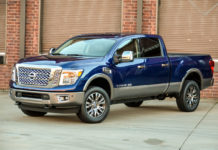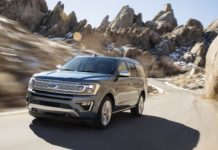Built-in navigation systems increase the depreciation of a car or truck, a startling fact that has some car companies rethinking their approach to the $2,000 factory-installed systems.
“Navigation could be like cellphones built into cars in the '70s and '80s; those big, blocky phones that nobody has now. Everybody has a small, personal cellphone,” says John Krafcik, vice president for product development at Hyundai Motor America.
Hyundai will begin offering built-in navigation on top models later this year, but for most models it emphasizes Garmin International's (GRMN) $750 Nüvi portable units sold by Hyundai dealers.
“You can unplug them, take them along when you travel, use them in your rental car, even listen to music or watch movies on some of them,” Krafcik says.
Toyota (TM) plans to announce later this year that it will offer lower-price, “entry-level navigation on some models,” says Paul Williamsen, product education specialist who oversees training of dealership employees and recently was named manager of what Toyota calls Lexus College.
FIND MORE STORIES IN: Honda | GPS | Acura | James R Healey
“We're sensitive to the issue” of navigation depreciation “and hope to reduce the gap between what a buyer pays new and what it's worth used.”
He says the entry setup will lack voice command and will have a lower-resolution display but will retain touch-screen controls. “That's an expensive component but highly valued by consumers,” and it distinguishes built-ins from most add-ons, he says.
Posh brand Land Rover made navigation optional on its LR2 small SUV to avoid pulling down the resale value of all LR2s.
“I had to assign special VINs (vehicle identification numbers) to the ones with navigation,” says product planner Greg Gilliland.
LR2 without navigation will be worth 55% of its original value after three years, while one with navigation will be worth 52%, Automotive Lease Guide (ALG) has projected. ALG is a major forecaster of so-called residual values, used as a guide for lease contracts and as a measure of expected depreciation.
Two reasons that navigation isn't worth much in a used vehicle:
•Used-car buyers are looking for bargains, not technology, says James Clark, senior manager of consulting for ALG.
Clark's example: A high-end 2007 Acura TSX sedan should be worth 55% after three years without navigation, 53% with. The $2,000 navigation option winds up adding no more than $600 to the value of the 3-year-old car, he says.
Other technology that usually depreciates fast, according to Clark: adaptive cruise control, night vision, cooled seats.
•Technology changes. “The development cycle on these (portable) units is a year or less,” says Ted Gartner, Garmin spokesman.
Selling portable systems through auto dealers “is an easy way to offer the latest and greatest unit to the customer in the showroom, already in a buying mood. Rolling $750 into a car note isn't that much,” he says.
For $1,000 or less, portable navigation units can provide Bluetooth phone compatibility, real-time traffic updates, weather reports and locations of the cheapest gasoline.
Plug-in software cards can show the latest restaurant ratings, movie listings and other features that equal or better $2,000-and-up factory-supplied systems.
A major difference: Some automakers' units can be controlled by voice commands; most portables can't.
Garmin's financials are telling. The company reported a net income jump to $514 million last year vs. $311 million in '05, largely driven by a 270% boost in auto and portable navigation revenue, to nearly $1.1 billion.
Honda's (HMC) luxury brand Acura, a pioneer of navigation systems, remains committed to factory-installed units, says John Watts, Acura product planning manager.
“People who buy luxury cars don't want something stuck on their dash,” he says. “And they're fearful of theft.”
Honda's own lender, American Honda Finance, shows navigation-equipped models are worth 1 percentage point less as used cars than non-navigation models, Watts says, though “five years ago, they were at the ALG level of 2 or 3 points difference.”
Alpine Electronics of America sells built-in systems to car companies for factory installation and has discussed models out to 2012, so it doesn't see automaker-installed navigation vanishing.
But portables are growing so fast that Alpine decided it had to develop those, too, and jumped into the market in 2005.
“It's the only growth area of the automotive electronics segment, and it's triple-digit growth” from year to year, says Stephen Witt, Alpine's vice president of marketing.
So many companies are rushing out new portables, he says, that units as cheap as $200 or so are “sold everywhere. You have Bed Bath & Beyond selling portable navigation these days. It's bizarre.”








